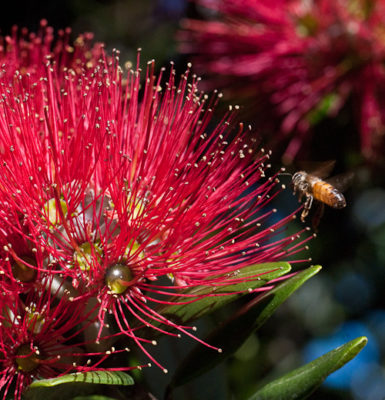The Dutch capital is leading the way on beeing friendly
Bees provide so many benefits to the ecosystem through pollination and the nutrient cycle. Bees are the start of the food chain. What’s good for bees is also very good for us.
But bee numbers are dwindling around the world.
Bees and other pollinating insects are being progressively squeezed out from their natural homes. Rural, green areas are diminishing in direct response to the spread of concrete and growth of our cities. Bees’ natural habitats are being threatened by the widespread use of insecticides and global warming.
What are the bees doing?
Cities are looking like increasingly useful places to live. Bees are moving to the cities. So, if we collectively do a little more to help the bees and other pollinating insects, the rewards will be worth it, both for them and us. Bees make our cities more social, friendly and alive.
Cities have reserves, gardens, parks, cemeteries, roadside verges, car parks and walkways which contain a wide diversity of bee fodder. All of these areas are becoming increasingly necessary for wild bees to survive, and we need to help them become even more bee-friendly.

We need to incorporate bee friendliness into our urban planning and into our home gardens and day-to-day living. We need to make the spaces we humans live in as welcoming and nourishing as possible for our buzzy neighbours.
What are the city planners doing elsewhere?
Across the Netherlands’ capital, Amsterdam, green spaces have been transformed into beds of native plants: plants that are known to attract bees and butterflies have been strategically planted and chemical pesticides have been banned on public land. The city has invested $38.5 million in a sustainability fund to improve the environment for bees, and other insects.
The results? Amsterdam’s populations are buzzing. The city’s diversity of wild bee and honeybee species is up 45% from 2000, according to an NBC report. While the U.S. bee population fell by 23 percent between 2008 and 2013, Amsterdam is abuzz with activity.
What can we do to help the bees?
By taking more care to plant bee-friendly flowers in our gardens and flowers that blossom throughout the whole year, we can make sure that bees have something to keep them going while they pollinate, flourish and grow in numbers. Bees also need healthy, pesticide and herbicide free flowers. We can avoid treating flowers with chemicals. One recent study has proven that a pesticide widely used on our gardens actually makes it harder for bees to fly on target.
Bees make our cities greener and more alive. To ensure they can continue to do their important work, they need our help.
